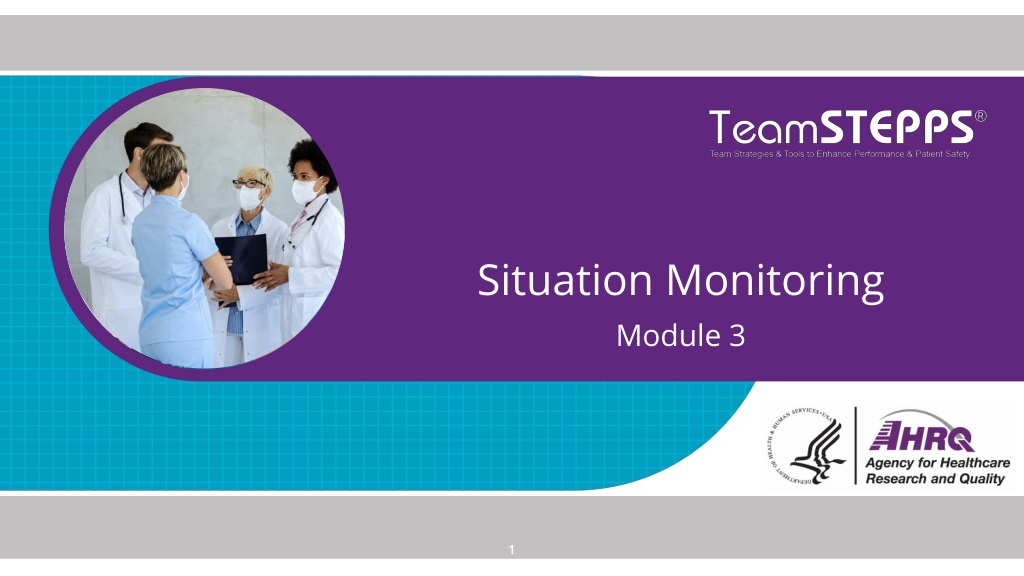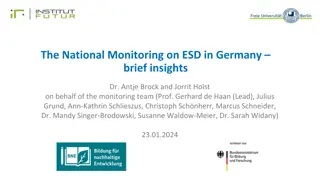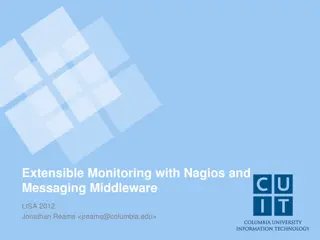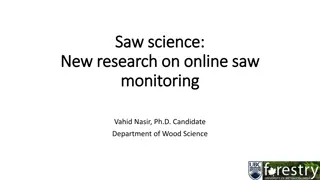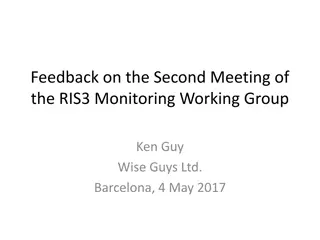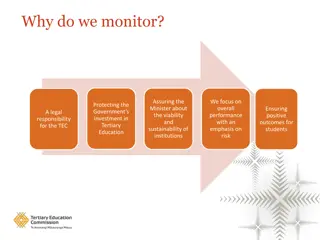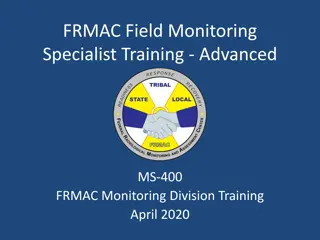Enhancing Situation Monitoring for Effective Team Communication
Explore the importance of situation monitoring in team processes, emphasizing situation awareness, shared mental models, and mnemonic tools. Engage in interactive exercises to understand challenges in communication and decision-making. Discover how effective situation monitoring ensures new information is communicated promptly and supports team members effectively.
Download Presentation

Please find below an Image/Link to download the presentation.
The content on the website is provided AS IS for your information and personal use only. It may not be sold, licensed, or shared on other websites without obtaining consent from the author. Download presentation by click this link. If you encounter any issues during the download, it is possible that the publisher has removed the file from their server.
E N D
Presentation Transcript
Situation Monitoring Module 3 1
Situation Monitoring Exercise: Rebuild Your Tower Situation Monitoring Rules: Same goals and rules as the earlier tower building exercise except one BIG change: The Color Guide cannot speak or write the name of any color. The Length Guide cannot speak or write any number. The Direction Guide cannot speak or write north, south, east, or west. Your group will have 1 minute to plan and 2 minutes to build your tower. 2
Situation Monitoring Exercise: Discuss Rebuilding Your Tower Situation Monitoring Discussion: Why was this round harder? What strategies did you use to communicate effectively as a group? What challenges confronting people with limited English proficiency does this exercise highlight? What situation monitoring concepts and tools does this exercise illustrate? 3
Situation Monitoring Objectives Understand how situation monitoring affects team processes and outcomes. Explain situation awareness and identify approaches to maximize it. Define a shared mental model and how it is cultivated within a team. List components of STEP and other mnemonic tools. 4
Situation Monitoring Situation Monitoring Ensures new or changing information is identified for communication and decision making. Leads to effective support of fellow team members. 5
Situation Monitoring: A Continuous Process Situation Monitoring 6
Situation Monitoring Situation Awareness Is The state of knowing the current conditions affecting one s work. It includes knowing Status of the patient. Status of other team members. Environmental conditions. Current progress towards goals. 7
Situation Awareness Small Group Discussion Situation Monitoring Goal: Identify factors that promote and prevent situation awareness. Process: In your group, compile a list of factors that affect situation awareness in your team. Create a list of ways other team members help or hurt your situation awareness. Discuss what group members do to help get and share information with patients to foster situation awareness. 8
Conditions That Maximize Situation Awareness Situation Monitoring When team members: Share information with the team Request information from others Direct information to specific team members Include patient or family in communication Use resources fully (e.g., status board, automation) Maintain documentation Know and understand where to focus attention Know and understand the plan Inform team members when the plan has changed 9
How Shared Mental Models Help Teams Situation Monitoring Lead to mutual understanding of situation Lead to more effective communication Enable backup behaviors Help ensure understanding of each other s roles and how they interplay Enable better prediction and anticipation of team needs Create commonality of effort and purpose 10
Situation Monitoring A Shared Mental Model Is The perception of, understanding of, or knowledge about a situation or process that is shared among team members through communication. Who Lacks the Shared Mental Model? 11
Situation Monitoring What Do You See? 12
Situation Monitoring When and How To Share? When: Briefs Huddles Debriefs Transitions in care How: SBAR Call-outs Check-backs 13
Tools To Support Situation Monitoring Situation Monitoring Tool Primary Use STEP I M SAFE Cross-Monitoring Status of Environment and Other Team Members STAR Status of Specific Activities or Tasks Patient Status Team Member Status 14
Situation Monitoring Status of Patient Patient History Vital Signs Medications Physical Exam Plan of Care Psychosocial Condition Patient Preferences or Concerns If Patient Has Limited English Proficiency 15
Situation Monitoring Team Members Fatigue Workload Task Performance Skill Level Stress Level 16
Situation Monitoring Environment Facility information, including occupancy levels Administrative information and available staff Human resources Triage acuity Community or facility disease outbreaks Equipment status 17
Situation Monitoring Progress Toward Goal Call a Huddle! Status of Team s Patients Goal of Team Tasks/Actions That Are or Need To Be Completed Plan Still Appropriate 18
Tools for Situation Monitoring: I M SAFE Checklist Situation Monitoring 19
Tools for Situation Monitoring: Cross-Monitoring Situation Monitoring What it is: Watching each others back to ensure team members actions are consistent with the plan and advocating for the patient as needed when risks arise and help is needed. Why it matters: The plan may be unclear or misunderstood. The plan may be forgotten or changed. When plans are unclear or not implemented, a shared mental model is lost and patients are at risk. How to do it: Make monitoring each other a group norm that s expected and not a sign of mistrust. Encourage asking questions to confirm that actions match the plan. Express concerns when actions aren t consistent with the plan. Involve the patient whenever relevant. 20
Situation Monitoring Cross-Monitoring Example What actions by the nurse manager demonstrated cross- monitoring? Would your teams respond positively to the use of cross- monitoring by its members? 21
Tools for Situation Monitoring: STAR Situation Monitoring What it is: A four-step mnemonic tool that is used extensively to elicit and share key information about activities and their consequences. Key elements include: Stop: Pause to focus on the immediate task. Think: Think methodically and identify the correct action. Act: Perform the act. Review: Confirm anticipated result has occurred or apply contingency if required. Practice example: Pick a task you were asked to perform by a family member or friend in the past month that didn t quite go as planned. Use STAR to explain what you did and what you could have done differently to have achieved a better outcome. 22
Situation Monitoring Tools and Strategies Summary 23
Situation Monitoring Applying TeamSTEPPS Exercise 1. Is your teamwork issue related to the team s or individuals situation monitoring skills? 2. If yes, what is the situation monitoring issue? 3. Which situation monitoring tools or strategies might you consider implementing to address the issue? 24
